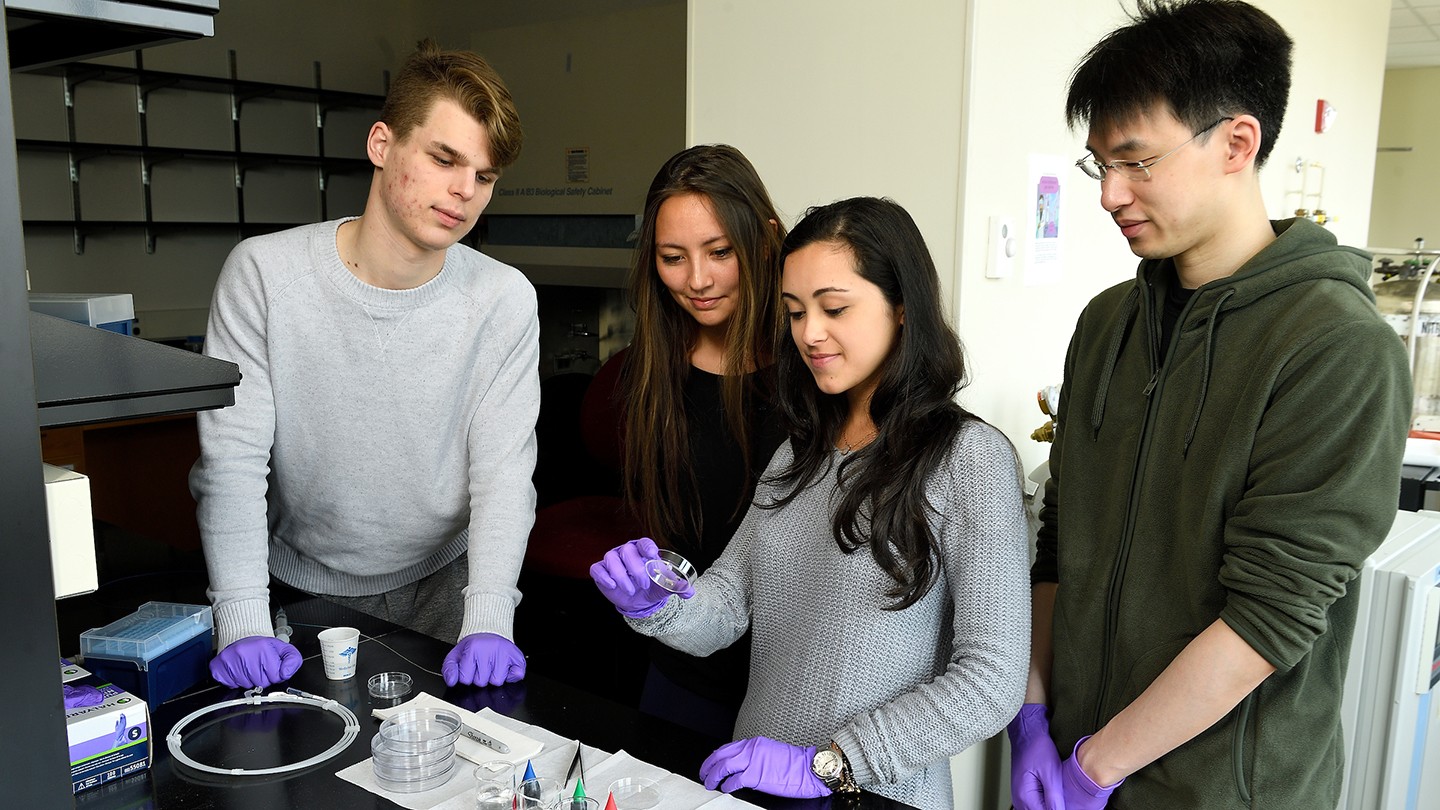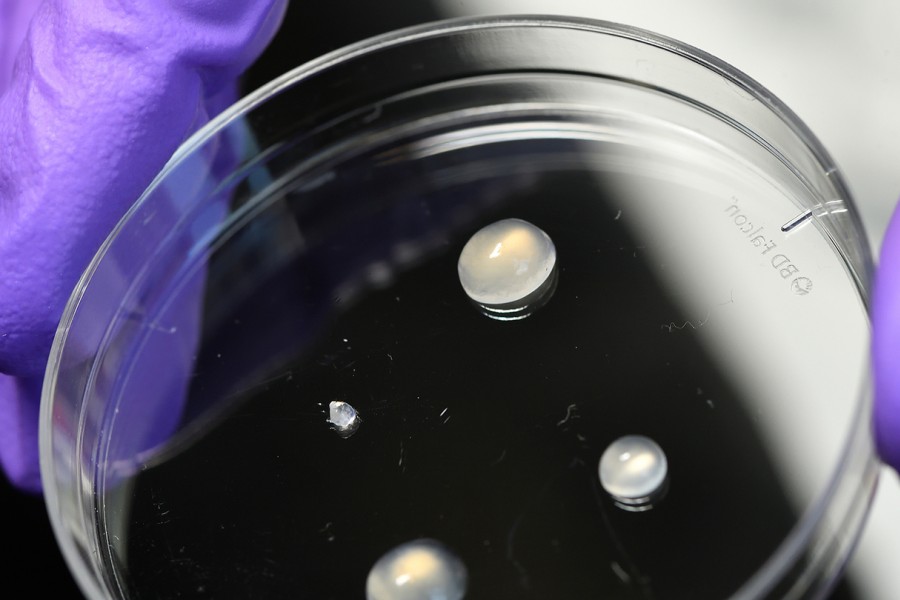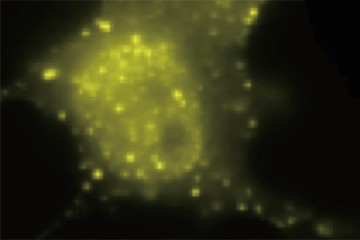Stemming the flow of blood to starve a tumor or stop hemorrhage can be an expensive, repetitive task for doctors, requiring a variety of approaches and materials for different patients and different sized blood vessels. Often the interventional radiologists who perform these important procedures must try several times in order to successfully stop the bleeding.
A team of students from Johns Hopkins University's Department of Materials Science and Engineering has developed a "super gel" that has the potential to eventually make this process easier, less expensive, and more efficient. The gel can pass through a catheter—the delivery vehicle of choice—but is hyper-absorbent enough to then swell with blood, creating a clot to block any bleeding.
"It's similar, in a way, to when you get a scab or something when you cut your hand," said Rasha Bara, one of the student team members who worked on the project. "It starts bleeding and you put a Band-Aid on there and it starts forming clots."
The students tackled this challenge as part of their senior design experience, in which sponsors give students a small budget to design and build a prototype that solves a problem. The project's clinical sponsor is Christos Georgiades, a medical doctor and director of interventional oncology at Johns Hopkins Medicine.
"The scope of our effort is to develop a one-size-fits-all, inexpensive embolization tool that can be easily and effectively deployed," said Georgiades, who pointed out that currently available tools are not only expensive, but also require considerable technical expertise.
"His original concept is almost like a sponge," said faculty co-advisor Hai-Quan Mao, professor in materials science and engineering and associate director of the Institute for NanoBioTechnology.

Image caption: Student team members (from left) Bijan Varjavand, Abby Weyer, Maria Lugo-Fagundo, and Allen Lai
Image credit: Will Kirk / Johns Hopkins University
Georgiades envisioned an exaggerated version of a kitchen sponge—something with immense swelling capacity that can be shrunk or folded into a delivery catheter. Ideally, it would easily pass through a narrow catheter in its dry form, but on expulsion into the blood vessel, it would immediately absorb blood and swell, restricting blood flow. In addition, the biocompatible "super gel" would also need to be able to withstand blood pressure—neither disintegrating nor flowing downstream to occlude the wrong vessel.
The students' gel looks promising: It is porous and can pass through needles before rapidly regaining its original form.
"With this new gel, we're pretty confident that it's going to function well and remain harmless to the patient," said Maria Lugo-Fagundo, leader of the student design team.
So-called "embolic agents" such as the students' hydrogel essentially act as a scaffold for the body's natural clotting mechanisms. The students say that their hydrogel offers a two-fold advantage over ordinary embolic agents in that it has an enhanced framework and immense swelling capacity. Team members also plan to add collagen, a structural protein that will bolster the clotting process, to the mix. Currently they are testing tiny, translucent slivers of gel to see if it is durable, swells back into shape quickly, and can be easily delivered.
Mao said the earliest prototype of their gel was less ideal, largely because it did not swell enough. Luo Gu, an assistant professor in materials science and engineering and a faculty co-advisor for the team, suggested using a different technique to make the hydrogel.
In a culmination of their efforts, the team will present their embolization device at the university's annual Whiting School of Engineering Design Day on May 8.
The senior design class is a two-semester capstone course intended to provide a broad exposure to many aspects of planning and conducting independent or team research projects, said Orla Wilson, senior lecturer in the materials science and engineering department and senior design instructor.
The student team also includes Bijan Varjavand, Allen Lai, Nikhil Menon, Evan Smith, Yi Zuo, and Abby Weyer.
Posted in Health, Science+Technology
Tagged mechanical engineering, surgery, undergraduate research, design days, hydrogels










